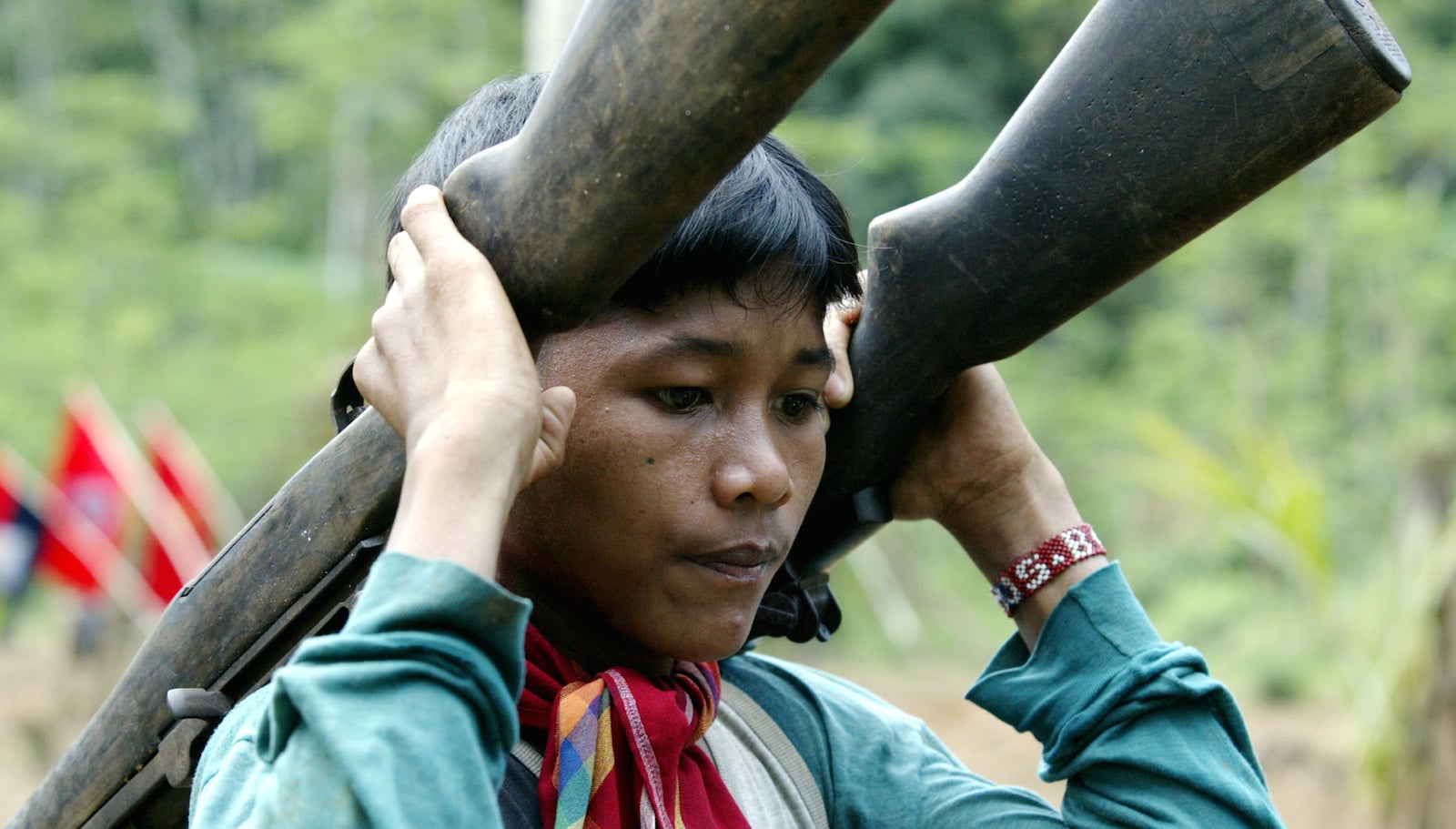Meet the small-town mayor risking her life to fight for peace in rural Philippines
A half-built concrete road connects the little town of Matuguinao with the outside world. It cuts through the rugged hills and lush rainforest of Samar, the easternmost island of the Philippines, where infrastructure is scarce and 45% of the population lives in poverty.


A half-built concrete road connects the little town of Matuguinao with the outside world. It cuts through the rugged hills and lush rainforest of Samar, the easternmost island of the Philippines, where infrastructure is scarce and 45% of the population lives in poverty.
Before the road opened in 2011, the only way Matuguinao’s 6000 inhabitants could reach the nearest neighboring town Gandara was by boat.
An army checkpoint a few miles inland bears evidence of the importance of this road, built with the help of the military. It leads to one of the last strongholds of the National People’s Army (NPA), a 47-year-old communist guerilla organization—long forgotten by the rest of the world.
One afternoon this summer, Melissa Dela Cruz, the mayor of Matuguinao, was having a busy day. About four barangay captains—or village chiefs—all of them women, were gathered at her wooden house, which also functions as her office. They were representing about 100 people from far-flung villages who had arrived in Mataguinao the night before, fleeing gun fighting between the NPA and the Armed Forces of the Philippines.
“In Matuguinao we have natural calamity and man-made calamity,” Dela Cruz told Quartz, rather humorously. “Living things are dying, plants and people.” Man-made calamity here is endless, but warring government forces and communist guerrillas both claim to be doing what’s best for the region’s civilians.
Dela Cruz was born in Matuguinao but left the town as a teenager to pursue university studies in Cebu City, the country’s second largest, where she graduated in accountancy and law. In 2010, her father, then-mayor of Mataguinao, was assassinated while campaigning for a second-term. So Melissa decided to resign from her job, go home and run in her father’s place.
“I try to treat the NPA and the military as partners,” she says of her role today.
“The military has a right to defend institutional order, and I have to trust in the intervention of our government. But the NPA helps to maintain peace and order in the far-flung barangays. They keep crime under control and help the people a lot.”
Created in 1969 as an armed wing of the Communist Party of the Philippines, the NPA once saw itself as a sort of successor of the “original” people’s army —the Hukbalahap, a resistance group against the Japanese occupation during World War II. This “new” people’s army sought to overthrow through armed struggle the US-backed dictatorship of Ferdinand Marcos, in a favor of a socialist state.
In the 1990s, the NPA lost much of its foreign aid and support. There are now only about 3,000 NPA cadres in the country, according to latest military figures—far from its estimated peak of 25,000 in the 1980s. Still, the NPA survived, and continues to thrive in the thick jungle of Samar.
Two-thirds of Samar’s 1.8 million population live off subsistence fishing and agriculture, with almost half living in poverty—the country’s average is 25%, according to 2014 data from the Philippine National Anti-Poverty Commision.
Samar is also ground zero for East Asia’s famous typhoons, such as Haiyan, which in 2013 displaced almost a million people in the Philippines, with Samar bearing the brunt of destruction. Such weather-related challenges pose difficulties for the region to attract much-needed private investments.
This opens a vacuum ready to be filled by armed groups, which provide protection against petty crime, such as cattle rustling or domestic violence. In Samar, the NPA fills a quasi-governmental role. “When typhoon Ruby hit us in 2014, the NPA helped us to rebuild our houses,” Melissa says.
Captain Andrew Linao of the Philippines Army sees it slightly differently. “The NPA is very much embedded in the communities, and that’s why it’s difficult to defeat them,” Linao tells Quartz. “Very often members of the village councils are relatives of NPA cadres, or NPA themselves.”
Captain Linao confirmed to Quartz that the 8th Division of the Armed Forces of the Philippines, which ostensibly controls these hinterlands of Samar, is currently trying to gain territory in Matuguinao; hence, the gunfight in the villages. For this and other spates of violence and intimidation, locals are unhappy with the Army.
“The NPA is not the root of our problems,” Melinda Díaz, the leader of one of the evacuated barangays, tells Quartz. “The problem is the military which accuses us of supporting them. They go to our houses, demand we answer questions we don’t know the answer to, or drag us to their barracks.”
“For decades people here have endured many abuses by the military officers in the name of fighting the NPA. Trust won’t be built overnight,” says Dela Cruz.
Despite a new military program called Oplan Bayanihan designed to build support networks in villages, the outlook is not good. In March, Dela Cruz’s strongest local political ally, Alfredo Díaz, was gunned down by a paramilitary group allegedly connected with the army. A few months later, guerilla NPA fighters shot dead a sleeping two-year-old while attempting to kill someone else in town.
“I am aware that my destiny might be just as my father’s,” says Melissa. “But the barangay leaders relied on me to take his place.” And what she and her constituents demand now is nothing more than a conflict-free space in which to build their lives.
“We don’t care about either of the sides,” she says. “They fight; they are enemies. We just want to be left at peace”.